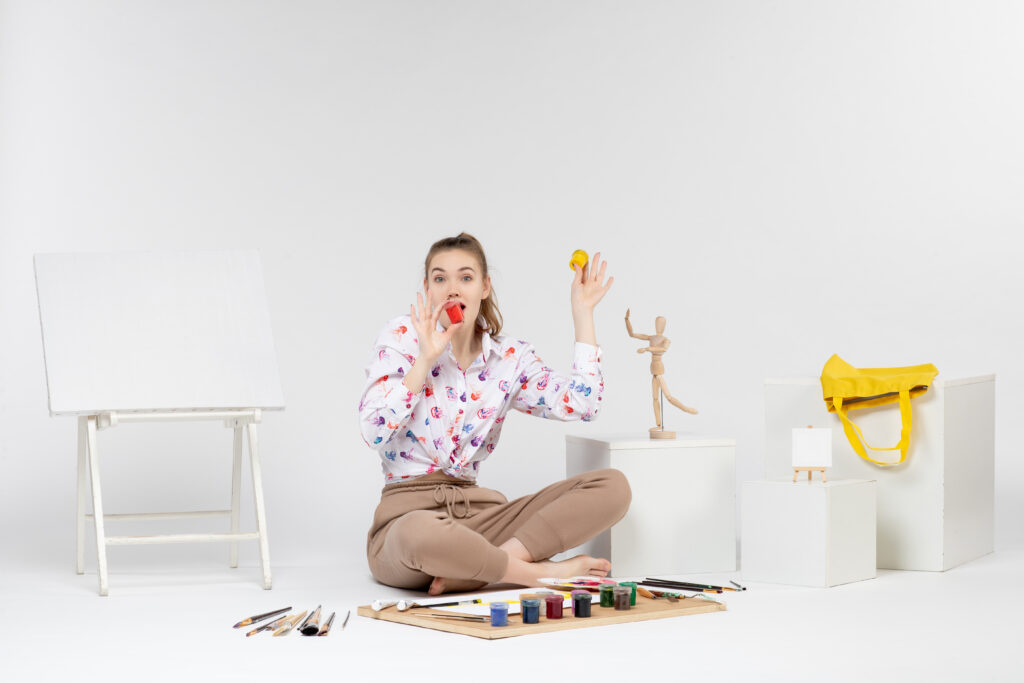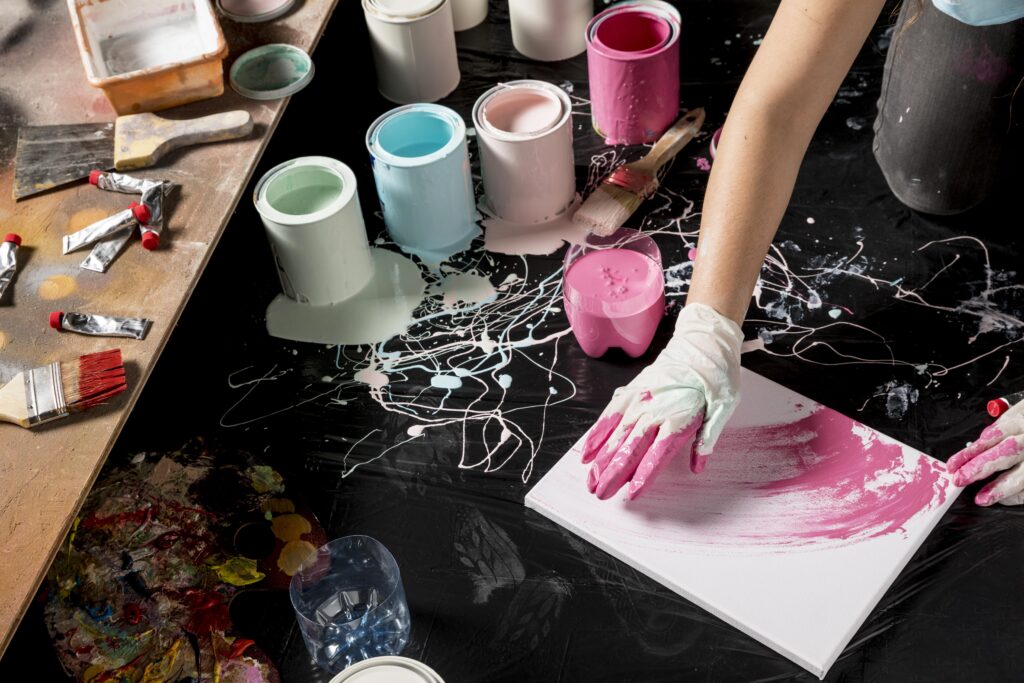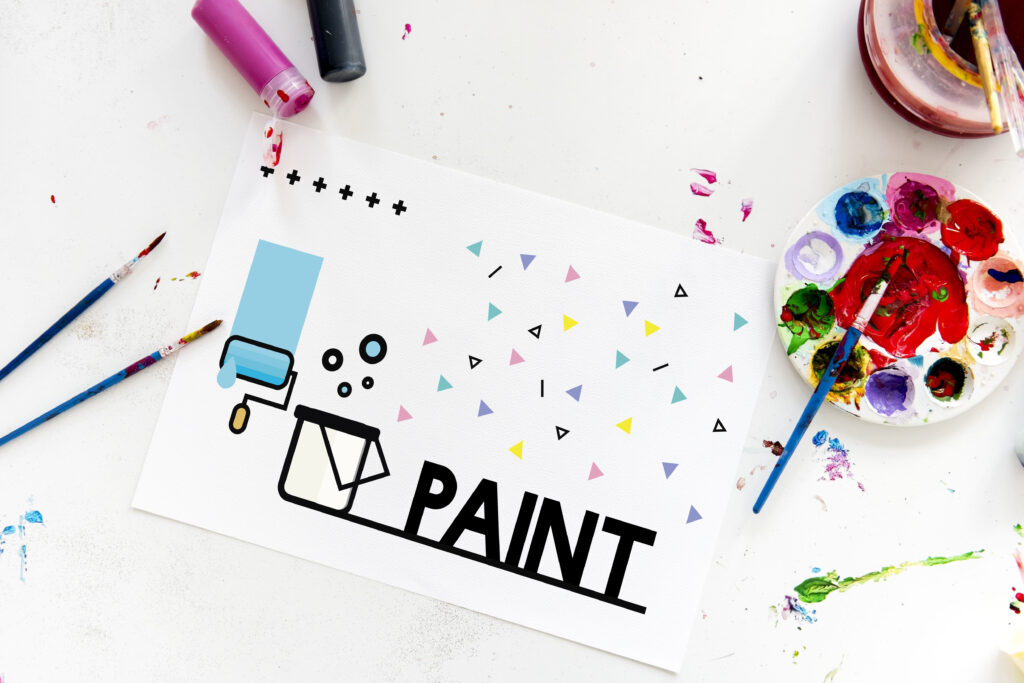GAN Technology: Painting Possibilities Unleashed
Generative Adversarial Networks, or GANs, have emerged as a transformative force in artificial intelligence, offering unprecedented image generation and manipulation capabilities. As we explore the potential applications of GAN technology, it is worth considering how its advanced algorithms might serve the artistically adept and those without traditional training in the visual arts.
From customizing digital landscapes to revolutionizing design processes across various industries, the scope of GANs is as vast as it is intricate. Imagine a tool that can extrapolate your simplest sketches into vivid scenes or adapt renowned artistic styles to your snapshots, effectively democratizing creativity and blurring the lines between novice and maestro.
As we navigate the intricacies of this technology, one ponders the myriad ways in which GANs could influence our perception of artistry, utility, and the very nature of collaborative creation between humans and machines.
Key Takeaways
- GAN technology can generate synthetic data that looks real, making it useful for various applications such as personalized art creation, mimicking famous styles, interior design visualization, and fashion and textile design.
- GANs consist of generative and discriminative components, allowing them to explore the latent space and create realistic images.
- GANs can restore incomplete and upscale low-resolution images without introducing artifacts, making them valuable for enhancing and refining visual data.
- GANs enable cross-genre personalized art creation, allowing users to input their preferences and have the generator model adapt accordingly, resulting in customized artwork that reflects individuality.
Understanding GAN Technology

Generative Adversarial Networks (GANs) are a class of machine learning frameworks that pit two neural networks against each other to generate new, synthetic data instances that can pass for accurate data.
The architecture comprises a generative component that creates data and a discriminative component that evaluates it. By iteratively adjusting the generative model based on feedback from the discriminator, GANs can produce novel data samples, such as images, that are increasingly difficult to distinguish from authentic ones.
In image generation, GANs explore the latent space—a compressed data representation—to synthesize novel and realistic images.
This enables the restoration of incomplete images or upscaling low-resolution images with minimal artifacts.
However, the precision of GANs is contingent upon the quality and relevance of the input data. Meticulous data curation is imperative to mitigate the emergence of artifacts and ensure accurate modeling of complex elements within the generated images.
GANs have found applications across various industries, including generating synthetic datasets for training computer vision systems.
Their ability to perform text-to-image translation and semantic image synthesis tasks positions them as a vital tool in creating digital content.
Personalized Art Creation

Building upon their capability to create synthetic data instances, GANs offer a unique avenue for personalized art creation, tailoring visual and auditory experiences to individual preferences and specifications. By harnessing the power of the generator model within a GAN, personalized art creation becomes not only accessible but also highly customizable. This technology can create new forms of artwork that resonate personally with users by incorporating elements that reflect individual tastes or themes.
- Personalized Art Creation with GANs:
- Image and Audio Enhancement:
- GANs can restore and enhance images, allowing for artistic reinterpretation of existing works.
- Audio generation and modification are possible, crafting unique soundscapes or music tailored to a user’s preference.
- Quality and Domain Adaptation:
- Upscaling low-resolution images to high-resolution GANs ensures the creation of detailed, high-quality art without artifacts.
- Adapting data across domains enables GANs to transform styles and elements, allowing for cross-genre personalized art creation.
The technical prowess of GANs lies in their ability to iteratively refine the generator model iteratively, ensuring the produced art aligns closely with the specified inputs. This analytical process, underpinned by precise algorithmic adjustments, results in personalized art that is innovative and reflective of individuality.
Mimicking Famous Styles

Harnessing the intricate algorithms of GAN technology, artists and enthusiasts can now produce artworks that closely emulate the distinctive styles of illustrious painters such as Van Gogh and Picasso. Generative models within the GAN framework are trained on vast datasets of historical artwork, enabling the synthesis of images that resemble the brushwork, color palettes, and compositional nuances of these masters. This capability facilitates the creation of new art that resonates with the emotional depth of traditional masterpieces and serves as a tool for educational and experimental purposes in art history and theory.
| Emotion Evoked | Style Mimicked |
|---|---|
| Awe | Van Gogh |
| Curiosity | Picasso |
| Serenity | Monet |
The technical prowess of GANs in image editing extends to the generation of fake images that, while visually convincing, prompt discussions about authenticity and originality in art. As we advance, the analytical examination of GAN-generated art contributes to a deeper understanding of artistic style and its digital replication, offering a novel venue for artists to analyze and appreciate the complexity of visual aesthetics.
Interior Design Visualization

As GAN technology empowers artists to replicate the styles of historical masters, it similarly revolutionizes the field of interior design by providing advanced tools for creating and visualizing complex spatial designs. The applications of GANs in this domain are manifold and exhibit high technical sophistication.
- Generation and Enhancement:
- Real Image Quality: GANs elevate the standard of visual representation by producing photo-realistic images that closely mimic real-world textures and lighting. These high-quality visualizations enable clients to gauge the aesthetics and functionality of proposed designs accurately.
- Design Augmentation: By generating images of interior spaces, GANs support designers in experimenting with different layouts, color schemes, and furniture arrangements without needing physical staging.
- Visualization and Modeling:
- Fragmentary Reconstruction: GANs can synthesize 3D models from incomplete visual data, facilitating a more immersive exploration of design concepts.
- Photographic Refinement: The technology improves the fidelity of interior design photographs, ensuring the final presentation to clients is striking and convincing.
In essence, GANs are reshaping interior design visualization, enabling designers to generate once-impossible images and broadening the scope for innovation and client engagement in this creatively demanding field.
Fashion and Textile Design
GAN technology has emerged as a pivotal tool for creating personalized patterns that cater to individual tastes and market demands in fashion and textile design.
By analyzing vast datasets, these algorithms offer designers valuable assistance in trend forecasting, enabling a data-driven approach to predict and incorporate emerging color schemes and design motifs.
The integration of GANs in this field not only streamlines the design process but also provides a platform for innovation, allowing for rapid prototyping and iteration of unique textile designs.
Personalized Pattern Creation
Generative Adversarial Networks (GANs) have revolutionized the fashion and textile industry by enabling the creation of personalized patterns that cater to the unique preferences and style nuances of individual customers. This bespoke approach to design is achieved through the following mechanisms:
- Personalized Pattern Creation:
- Generation of custom designs by learning from a dataset that includes various styles, motifs, and color schemes.
- Adaptation to individual preferences by modifying patterns based on user inputs, such as preferred images or selected hair color.
The technical proficiency of GANs in analyzing and synthesizing data results in high-quality, distinctive patterns. This enhances the user experience by offering tailored fashion options and propels the industry toward a more client-centric operation model.
Trend Forecasting Assistance
Building upon the capabilities of GANs in personalized pattern creation, these networks also offer significant advantages in trend forecasting for the fashion and textile industry by synthesizing futuristic design prototypes. Utilizing machine learning algorithms, these GAN applications analyze current fashion trends, generate novel patterns, and create high-quality images that forecast the evolution of design preferences. Their ability to produce synthetic textile patterns and realistic three-dimensional models from incomplete data sets is pivotal in shaping real-world applications within the industry.
| Capability | Description | Impact on Trend Forecasting |
|---|---|---|
| Novel Design Generation | GANs can generate unprecedented design samples. | Facilitates prediction of future trends. |
| Image Quality Improvement | Enhances the visual appeal of design prototypes. | Creates more compelling and marketable forecasts. |
| 3D Model Visualization | Renders 3D models from 2D images. | Assists in accurate representation of future textiles. |
| Synthetic Pattern Creation | GANs produce diverse textile patterns. | Expands the creative horizon for designers. |
| Personalization | Tailors designs to individual preferences. | Allows for niche trend prediction and customization. |
Video Game Environments
Within video game development, GAN technology has been pivotal in advancing procedural terrain generation, enabling the creation of vast, intricate landscapes with minimal manual input.
Integrating dynamic weather effects through GANs has transformed static scenes into evolving environments, heightening the sense of realism and immersion.
Moreover, the capability of GANs to facilitate realistic NPC creation is revolutionizing character design, offering nuanced and lifelike interactions that enhance player engagement.
Procedural Terrain Generation
In video game development, procedural terrain generation leveraging GAN technology revolutionizes how dynamic and realistic landscapes are created. The core of this innovation lies in applying advanced GAN architectures to synthesize terrain elements that are both complex and rich in diversity.
These generative models, informed by principles of computer vision, are instrumental in fabricating diverse terrain features such as mountains, rivers, forests, and valleys. They also enable the creation of texture and elevation variations, resulting in highly detailed environments.
Moreover, these GAN-based techniques allow for generating unique layouts that enhance gameplay. Developers can now create vast worlds with scalable complexity, offering players a truly immersive experience.
The advent of new GAN methodologies empowers developers to generate vast, lifelike worlds efficiently without the traditional overhead of manual design. This sets a new standard for authenticity and visual appeal in video game environments.
Dynamic Weather Effects
As GAN technology facilitates the creation of detailed and varied terrains, it also paves the way for integrating dynamic weather effects, further enhancing the realism of video game environments. Leveraging GANs, developers can simulate real-world atmospheric conditions with remarkable accuracy. These neural networks generate weather patterns that evolve, influencing gameplay in profound ways. Dynamic weather systems challenge players to adapt their strategies in response to environmental cues by affecting visibility, movement, and sound.
| Effect | Gameplay Impact | Emotional Ambience |
|---|---|---|
| Rain | Reduced visibility, slippery surfaces | Tension, uncertainty |
| Snow | Impaired movement, altered terrain | Isolation, serenity |
| Fog | Limited sight, muffled sounds | Mystery, anxiety |
This table exemplifies how dynamic weather effects, enabled by GAN technology, transform the aesthetic and emotional landscape of video game environments.
Realistic NPC Creation
Leveraging Generative Adversarial Networks (GANs), video game developers can craft non-player characters (NPCs) that elevate realism through intricate appearances and dynamic behaviors. This innovative approach to realistic NPC creation harnesses the power of GANs to:
- Generate human faces with high fidelity:
- Provide a diverse array of facial features that mirror the complexity of real human expressions
- Enable subtle nuances in appearances to reflect a rich virtual populace
- Enhance behavioral patterns:
- Equip NPCs with the ability to exhibit natural movements and reactions
- Allow for adaptive interactions that are responsive to player actions and environmental changes
This technical methodology ensures NPCs are not just visually convincing but also interact in a perceptively authentic manner, profoundly enriching the gaming experience.
Custom Emoji Generation
Custom Emoji Generation through GAN technology represents a significant advancement in digital communication, allowing users to create highly personalized and expressive emojis by harnessing the capabilities of Artificial Intelligence, specifically GAN Technology, custom emojis can now be synthesized with fine-grained attributes reflective of individual identity and mood. This application of face editing in the digital realm transcends traditional emoji sets, providing a bespoke means of expression.
The technical architecture underlying GANs involves training on vast datasets to learn the nuances of facial expressions and dynamic cues. Once trained, these networks can generate new, unique emojis from user-provided inputs, encompassing a spectrum of emotions and styles. The resulting emojis are diverse and deeply resonant with personal characteristics.
Integrating these custom emojis into communication platforms enhances digital interaction, making it more engaging and reflective of real-life conversations. Below is a table designed to evoke the emotional impact of custom emojis created through GAN technology:
| Emotion | GAN Custom Emoji | Impact on Communication |
|---|---|---|
| Happiness | 😄 (Personalized) | Adds warmth and positivity |
| Sadness | 😢 (Customized) | Conveys empathy and understanding |
| Surprise | 😲 (Tailored) | Captures authentic reactions |
| Affection | 😍 (Individualized) | Deepens bonds between users |
GAN-powered emoji generation signifies a leap in conveying emotions digitally with precision and a personal touch.
Dynamic Storyboarding
Dynamic Storyboarding transforms the conceptualization of narratives into a visual and structured process, enhancing filmmakers’ and animators’ ability to pre-visualize scenes and communicate intricate story details. This technique facilitates the depiction of complex storylines by arranging and fine-tuning images representing scenes or actions.
Incorporating Generative Adversarial Networks (GANs), Dynamic Storyboarding can leverage the power of AI to generate highly realistic frames, providing a more tangible representation of the envisioned narrative. GANs can synthesize images that closely resemble real photographs, aiding creators in visualizing the final product more accurately.
The integration of GANs within Dynamic Storyboarding addresses different problems:
- Efficiency in Visualization
- Reduces time and resources spent on manual sketching.
- Accelerates the iteration process for scene composition.
- Enhanced Creativity
- Offers novel visual representations beyond human artists’ limitations.
- Encourages exploration of diverse artistic styles and environments.
Educational Illustrations
Building upon the creative potential of GANs in dynamic storyboarding, these technologies also hold significant promise in revolutionizing the creation of educational illustrations. GANs can synthesize high-quality images that can transform how educational content is presented. Their capacity to generate photo-realistic single-image super-resolution images ensures that even the most complex educational illustrations are detailed and precise, enhancing the learning experience.
The capabilities of GANs to produce diverse and accurate educational illustrations are not limited to a single subject but span multiple disciplines. The table below illustrates the variety of applications for GAN-generated illustrations in education.
| Subject | GAN Application | Benefit |
|---|---|---|
| Science | Detailed biological diagrams | Enhances comprehension of intricate systems |
| History | Reconstructions of historical events | Provides visual context to textual information |
| Mathematics | Visualizations of complex equations | Aids in conceptual understanding |
| Literature | Scenes from literary works | Engages students with visual storytelling |
Educators can leverage GAN technology to create engaging and informative illustrations that cater to different learning styles. This technical innovation paves the way for a more interactive and visually rich educational environment where illustrations are supportive and integral to learning.
FAQs
What is GAN technology, and how does it relate to painting?
GAN technology, or Generative Adversarial Network technology, is a type of machine learning model consisting of a generator and a discriminator. In the context of painting, GANs can be used to generate new and realistic artworks.
What can GANs paint for you?
GANs can paint a wide range of images, including realistic portraits, landscapes, abstract art, and even imaginative and surreal compositions. The content generated by GANs is diverse and can be tailored based on the training data and parameters.
How does the painting process with GANs work?
GANs operate through an adversarial process where the generator creates images, and the discriminator evaluates their authenticity. This dynamic interplay refines the generator’s ability to produce realistic paintings, often based on a given dataset.
Can GANs be used to paint portraits or other specific subjects?
Yes, GANs can be trained on specific datasets to specialize in painting portraits, landscapes, animals, or any other subject. By providing relevant training data, the generator learns to create paintings in the style of the input dataset.
Do GANs have the ability to mimic the styles of famous artists?
Yes, GANs can be trained to mimic the styles of famous artists. By using datasets containing artworks from specific artists, GANs can generate paintings that reflect the distinctive styles of those artists.